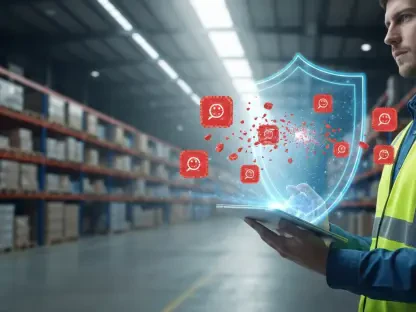Push notifications have become indispensable in modern digital marketing strategies due to their ability to enhance user engagement and drive sales conversions effectively. These brief, timely alerts, popping up on users’ devices, offer a direct line of communication between businesses and their audience, which traditional marketing forms often lack. By leveraging push notifications correctly, businesses can create personalized, timely, and relevant messages that capture users’ attention and prompt them to take desired actions.
Understanding the mechanics and strategic uses of push notifications is crucial for tapping into their full potential. Push notifications are designed to be concise and immediate, ensuring the information is delivered when it is most relevant to the user. Unlike emails or social media posts, which can get lost in crowded inboxes or feeds, push notifications appear directly on users’ devices, making them hard to ignore. This immediacy can translate into higher engagement rates, especially when the messages are personalized and well-timed.
Understanding Push Notifications
Push notifications are essentially pop-up messages that users receive on their desktop or mobile devices. These alerts are typically concise and require users to opt-in to receive them, which ensures that the recipients have already shown an interest in the brand or service. Each push notification can include various elements such as a title, message, URL, and rich media like emojis, GIFs, images, or even videos. This versatility allows businesses to use push notifications for a wide range of purposes, including transactional updates, promotional alerts, and user engagement reminders.
The primary advantages of push notifications over other forms of marketing communication like email or SMS are manifold. Firstly, push notifications generally have higher engagement rates, as they appear directly on the user’s screen and demand immediate attention. Secondly, they allow advanced scheduling, which enables businesses to send targeted messages at times when users are most active on their devices. Lastly, push notifications can be highly personalized, thanks to data analytics and preference settings, making them more likely to resonate with the user and lead to conversions.
Operational Mechanisms of Push Notifications
The operational mechanisms behind push notifications involve several key components, starting with push servers. Businesses rely on these servers to manage and enable the push notifications process, handling everything from scheduling to automation and mass delivery. These servers must integrate seamlessly with Application Programming Interfaces (APIs) to ensure that messages are delivered across various devices, browsers, and operating systems. For instance, a notification may appear differently on Apple iOS compared to an Android device, or across different web browsers like Chrome or Safari.
Understanding the technical aspects of how push notifications function is essential for optimizing their effectiveness. By recognizing how notifications are scheduled and delivered, businesses can fine-tune the timing and content of their messages to better align with user behaviors. Ensuring that messages are delivered in a format that is compatible with the user’s device and browser not only improves the user experience but also increases the likelihood of engagement. This technical insight enables businesses to harness the power of push notifications more effectively, maximizing user interaction and driving sales.
Types of Push Notifications
Web-Based Push Notifications
There are several types of push notifications, each serving a different purpose and audience. Web-based push notifications, for example, appear on desktop or mobile devices via operating systems and web browsers. These notifications are typically sent by websites and can display differently based on browser settings and operating systems. Web-based notifications are particularly effective for reaching users who are actively browsing the internet, as they can prompt immediate interaction with the website or service being promoted.
Web-based push notifications are highly versatile and can be used for various purposes, including informing users about new blog posts, product launches, or time-sensitive promotions. They are an excellent way to capture the attention of users who may not be actively using the business’s app or who have not yet opted to receive email communications. By leveraging web-based push notifications, businesses can reach a broader audience and drive traffic to their websites, ultimately boosting engagement and sales.
App-Based Push Notifications
App-based push notifications, on the other hand, are developed specifically by individual app publishers and appear on mobile devices. Users need to opt-in to receive these notifications, which often prompt further action such as clicking a URL, completing a purchase, or engaging with the app in some other form. The ability to adjust these notifications to appear immediately or to be delayed for later viewing in the user’s notification center and lock screen makes them highly flexible and user-friendly.
One of the primary advantages of app-based push notifications is their ability to target users who have already shown a significant interest by downloading the app. These notifications can be customized to deliver personalized content and offers, making them highly effective for driving user engagement and sales. Whether it’s reminding users to complete a purchase left in their shopping cart or notifying them about a special offer, app-based push notifications can significantly boost user interaction and conversion rates.
Uses of Push Notifications
Push notifications can be employed in various ways, depending on the business type and objectives. They are highly versatile and can be tailored to meet specific needs, making them an invaluable tool for enhancing user engagement and driving sales. For instance, reminders can prompt users to complete tasks such as providing product feedback in exchange for discounts, while updates can deliver real-time information about order tracking or new product launches, keeping users informed and engaged.
Deals and promotions are another common use of push notifications. By informing users about special offers and limited-time deals, businesses can drive traffic to their websites and encourage purchases. Time-bound notifications create a sense of urgency, prompting users to act quickly before the offer expires. Additionally, security-focused notifications are used for confirming user identity during logins or purchases, often involving one-time passcodes or two-factor authentication (2FA). These notifications not only enhance security but also build trust with users.
Abandoned cart notifications are particularly effective for ecommerce businesses, reminding shoppers to complete transactions they have left hanging. Transactional notifications, on the other hand, provide updates on purchases, including details about shipping, payment confirmations, and subscription information. Public service announcements (PSAs) can also be delivered via push notifications, offering general informational alerts such as traffic and weather updates while providing opportunities for brand integration.
Best Practices for Push Notifications
Personalize Your Alerts
To maximize the effectiveness of push notifications, businesses should follow several best practices. Personalizing alerts is one of the most important strategies. Customized notifications that include personal information such as the recipient’s name, preferences, or past shopping behavior are more likely to engage users. By utilizing shopper data through services, businesses can create highly targeted and motivating notifications that resonate with the recipient and prompt action.
Be Mindful of Timing and Cadence
The timing and cadence of push notifications are also critical factors to consider. Choosing the right time to send alerts can significantly impact their effectiveness. Data and performance logs can indicate optimal times of day for high open rates, allowing businesses to schedule notifications when users are most active. Synchronizing with user time zones and preferences can further enhance the likelihood of engagement. It’s important to find a balanced cadence, starting with a maximum of three weekly notifications and adjusting as necessary to ensure users are informed without feeling overwhelmed.
Be Concise
Conciseness is another key best practice for push notifications. Short, clear messages are more effective in capturing users’ attention and conveying the intended message. Long notifications risk being cut off and may not hold users’ attention. For app-based notifications, industry standards recommend keeping the title between 25 to 50 characters and the message up to 150 characters. By keeping messages brief and to the point, businesses can ensure that users quickly understand the value and relevance of the notification.
Use GIFs, Emojis, and Videos
Incorporating visuals such as GIFs, emojis, and videos can make push notifications more engaging and visually appealing. These elements can grab users’ attention and add personality to the brand, making the notifications more memorable and enjoyable. Experimenting with different visual elements can also help businesses identify what resonates best with their audience, further enhancing the effectiveness of their push notifications.
Experiment with the Messaging
Not all audiences will respond similarly to the same message, so experimenting with messaging is essential. A/B testing involves sending different versions of a message to small groups to gauge performance before sending it to the broader audience. By analyzing the results of A/B testing, businesses can identify which notifications are more effective and refine their messaging accordingly. This iterative approach ensures that push notifications are continuously optimized to maximize user engagement and drive sales.
Push notifications provide an effective way for businesses to communicate directly with their users, driving engagement and enhancing visibility. By using advanced scheduling, personalization, and real-time updating, businesses can ensure their messages are seen when users are active and most likely to engage. Leveraging tools like APIs to manage and automate these processes makes it easier to send push notifications across various devices and operating systems.
Summary
Push notifications have become a powerful tool for businesses to enhance user engagement and drive sales conversions effectively. The key to their success lies in understanding their mechanics and strategic uses, as well as following best practices for personalization, timing, conciseness, and visual engagement. By leveraging push notifications effectively, businesses can create timely, relevant, and engaging messages that capture users’ attention and prompt them to take desired actions.
Common themes in the article emphasize the importance of personalization, timing, and concise messaging to maximize user engagement. The overarching trend is the strategic use of data to send targeted alerts, increasing the likelihood of user interaction and conversions. By implementing the best practices outlined, businesses can optimize their push notification strategies and significantly enhance the user experience.
Conclusion
Push notifications have become vital components in contemporary digital marketing strategies due to their capability to boost user engagement and drive sales conversions effectively. These short, timely alerts, appearing on users’ devices, provide a direct communication channel between businesses and their audience, something often missing in traditional marketing forms. When executed properly, push notifications allow businesses to craft personalized, timely, and relevant messages that successfully capture users’ attention and encourage them to take specific actions.
Mastering the intricacies and strategic applications of push notifications is essential for utilizing their full potential. Designed to be concise and immediate, push notifications ensure that information is delivered at the most pertinent moment for the user. Unlike emails or social media posts, which can easily be overlooked in crowded inboxes or feeds, push notifications appear directly on users’ devices, commanding attention. This immediacy often leads to higher engagement rates, especially when the messages are tailored and well-timed to meet individual user needs.









